
Filter News
Area of Research
- Advanced Manufacturing (3)
- Biological Systems (1)
- Biology and Environment (44)
- Computational Biology (1)
- Electricity and Smart Grid (1)
- Energy Science (70)
- Functional Materials for Energy (2)
- Fusion and Fission (12)
- Isotopes (20)
- Materials (65)
- Materials for Computing (9)
- National Security (18)
- Neutron Science (65)
- Nuclear Science and Technology (10)
- Quantum information Science (2)
- Supercomputing (26)
News Type
News Topics
- (-) Advanced Reactors (17)
- (-) Bioenergy (74)
- (-) Buildings (37)
- (-) Cybersecurity (20)
- (-) Energy Storage (47)
- (-) Isotopes (41)
- (-) Microscopy (31)
- (-) Neutron Science (95)
- (-) Physics (40)
- (-) Polymers (14)
- (-) Space Exploration (14)
- 3-D Printing/Advanced Manufacturing (73)
- Artificial Intelligence (85)
- Big Data (49)
- Biology (86)
- Biomedical (46)
- Biotechnology (25)
- Chemical Sciences (46)
- Clean Water (16)
- Composites (15)
- Computer Science (127)
- Coronavirus (23)
- Critical Materials (6)
- Education (2)
- Emergency (3)
- Environment (130)
- Exascale Computing (53)
- Fossil Energy (6)
- Frontier (47)
- Fusion (47)
- Grid (35)
- High-Performance Computing (92)
- Hydropower (6)
- Irradiation (1)
- ITER (5)
- Machine Learning (39)
- Materials (82)
- Materials Science (75)
- Mathematics (8)
- Mercury (7)
- Microelectronics (3)
- Molten Salt (3)
- Nanotechnology (29)
- National Security (67)
- Nuclear Energy (79)
- Partnerships (42)
- Quantum Computing (37)
- Quantum Science (52)
- Security (19)
- Simulation (46)
- Software (1)
- Statistics (2)
- Summit (42)
- Transportation (41)
Media Contacts

ASM International recently elected three researchers from ORNL as 2021 fellows. Selected were Beth Armstrong and Govindarajan Muralidharan, both from ORNL’s Material Sciences and Technology Division, and Andrew Payzant from the Neutron Scattering Division.
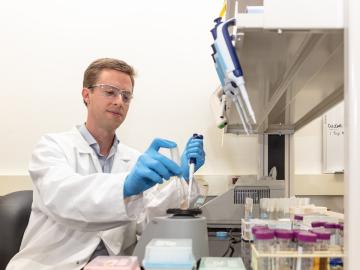
In a step toward increasing the cost-effectiveness of renewable biofuels and bioproducts, scientists at ORNL discovered a microbial enzyme that degrades tough-to-break bonds in lignin, a waste product of biorefineries.
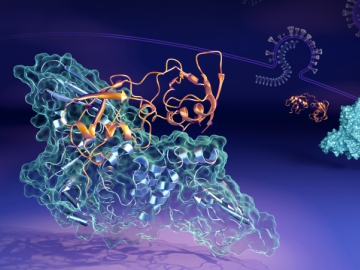
Scientists at Oak Ridge National Laboratory have uncovered how the SARS-CoV-2 virus evades the human immune system by studying the interaction between a viral protein (PLpro) and a key immune protein (ISG15). These insights could guide the development of therapeutic drugs to block this interaction, enhancing the body’s ability to combat the virus.

An ORNL-led team comprising researchers from multiple DOE national laboratories is using artificial intelligence and computational screening techniques – in combination with experimental validation – to identify and design five promising drug therapy approaches to target the SARS-CoV-2 virus.

In the mid-1980s, Balendra Sutharshan moved to Canada from the island nation of Sri Lanka. That move set Sutharshan on a path that had him heading continent-spanning collaborations and holding leadership posts at multiple Department of Energy

ORNL’s Zhenglong Li led a team tasked with improving the current technique for converting ethanol to C3+ olefins and demonstrated a unique composite catalyst that upends current practice and drives down costs. The research was published in ACS Catalysis.
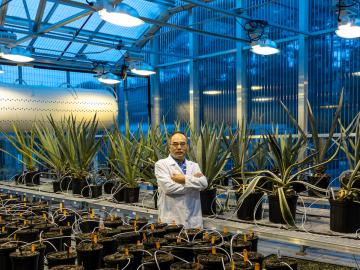
Scientists at ORNL have discovered a single gene that simultaneously boosts plant growth and tolerance for stresses such as drought and salt, all while tackling the root cause of climate change by enabling plants to pull more carbon dioxide from the atmosphere.

The Department of Energy’s Office of Science has selected five Oak Ridge National Laboratory scientists for Early Career Research Program awards.
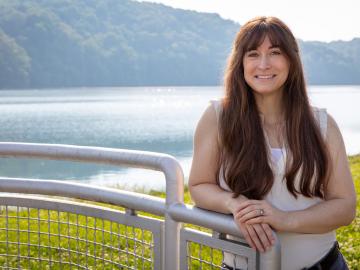
Carly Hansen, a water resources engineer at Oak Ridge National Laboratory, is rethinking what’s possible for hydropower in the United States.
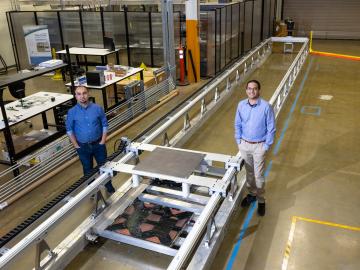
Consumer buy-in is key to the future of a decarbonized transportation sector in which electric vehicles largely replace today’s conventionally fueled cars and trucks.


